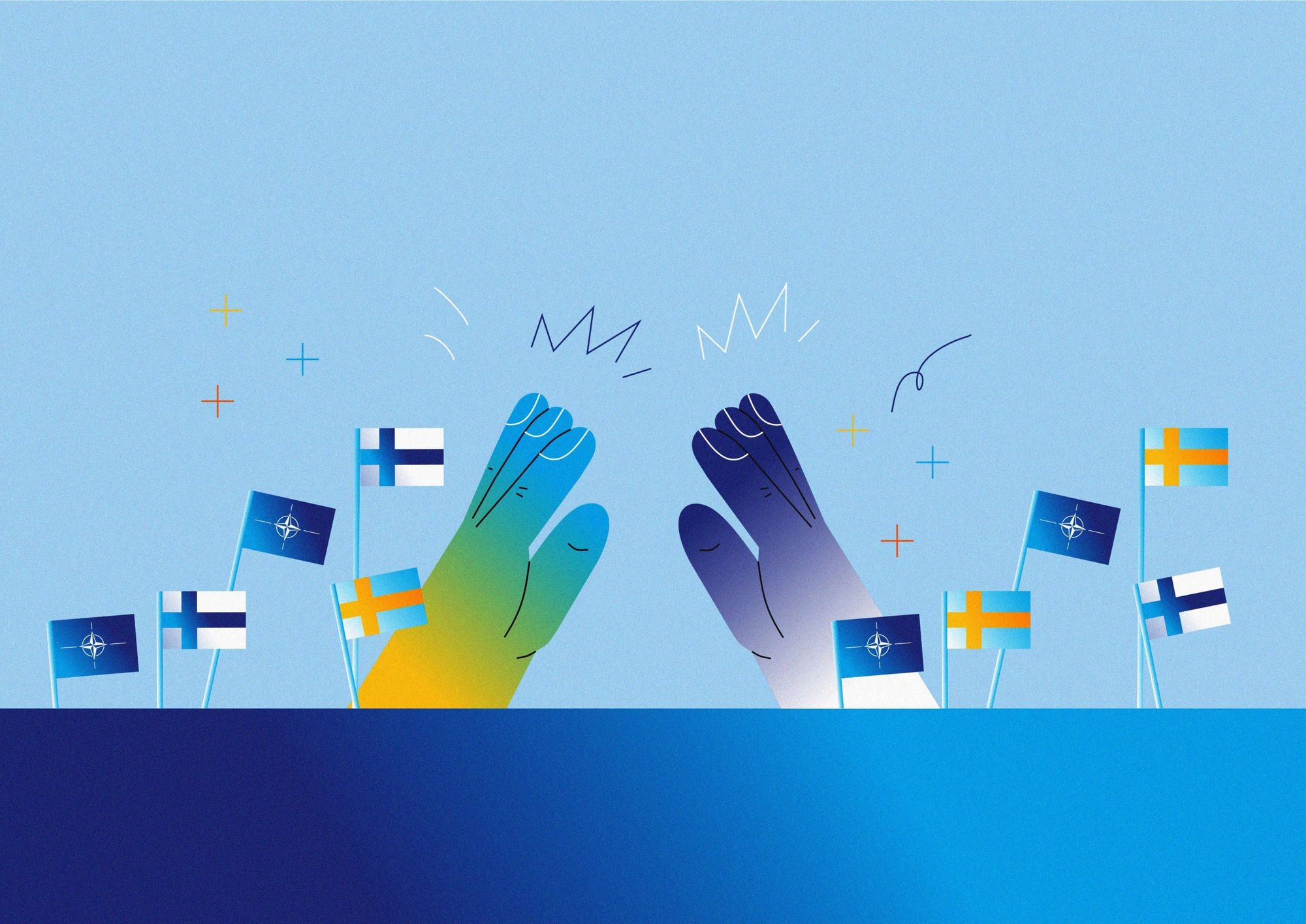It is no surprise that the Baltic states became even more worried about their eastern neighbor since the Russian invasion of Ukraine. Their fears are absolutely understandable, although the three countries are NATO members. Thus, when Finland and Sweden announced their NATO bids, no wonder Estonia, Latvia, and Lithuania were among the biggest supporters.
Moscow tries to officially justify the Russian invasion of Ukraine with the country’s increasingly close links with NATO, allegedly posing a security risk to Russia. However, it seems Putin reached the opposite of what he wanted: the Russia-NATO border will be even longer. The existing 1,215-kilometer border will be extended by 1,340 kilometers, with Finland joining the military alliance.
The two Nordic countries, Sweden and Finland, remained neutral from the two military alliances during the Cold War. Finland followed the so-called Paasikivi-Kekkonen doctrine during this period, meaning an actively neutral foreign policy that helped the country to survive as a democratic, capitalist state in the immediate proximity of the Soviet Union. Finnish leaders did not deem after the dissolution of the USSR that NATO membership would be necessary for the country, though since the 2000s, a potential NATO bid has been a topic of public debate.
Swedish neutrality has a long history. Since the beginning of the 19th century, the country’s goal in foreign politics has been to remain neutral in wars. The last time when Sweden was involved in an armed conflict was the Swedish-Norwegian war in 1814. It is not surprising that the country did not aim to join NATO between 1949 and 2022, but the Russo-Ukrainian war changed the Swedes’ position on the issue.
Finland will reach NATO’s target defense spending (at least 2 percent of a country’s GDP) by the end of 2022. The planned expenditure of $6.1 billion accounts for 2.2 percent of the country’s GDP. Sweden is less exposed to the Russian threat, as it has no borders with Russia. Stockholm only started to spend more money on defense again in 2017, and its defense spending is unsurprisingly still below the NATO target, at 1.3 percent. In absolute terms, however, this means $8.4 billion, which is more than its eastern neighbor’s expenditure. By 2027, both countries are expected to spend $9.3 billion annually on defense.
When the rumors started that the two Nordic countries would soon announce their NATO bid, the Baltic states could feel that their security might be enhanced. Edgars Rinkēvičs, Latvia’s Minister of Foreign Affairs, was pleased to note that the Baltic Sea could thus become a NATO sea. This development would be particularly significant for the three Baltic states, as they fear a Russian naval invasion aiming to create military bases on islands in the Baltic Sea.

Nonetheless, Russia is not the only problem Sweden and Finland face now. A unanimous agreement is required for a new member to join NATO. But Turkey does not favor Sweden and Finland joining NATO without conditions. Turkey argues that the two Nordic countries support the terrorists of the Kurdistan Workers’ Party (PKK) by harboring its activists and turning a blind eye to its operations. This allegation is quite insulting to Sweden, the second country after Turkey to condemn and designate PKK as a terrorist group in 1984, when Olof Palme was the country’s Prime Minister. The European Union waited until 2002 to take the same decision.
Turkey’s role in the Russo-Ukrainian war should not be underestimated. It has the second largest army in NATO, and perhaps even more importantly, it has relatively good relations with Russia despite its NATO membership. Therefore, it can mediate between the Russian and Ukrainian leadership. The ball is in the governments’ court; countries must make compromises to ensure that all interests prevail.
If Sweden and Finland eventually join NATO, it will be a necessary but not sufficient condition for Estonia, Latvia, and Lithuania to feel that their security is granted. 84.6 percent of Latvians fear a Russian invasion, which is not surprising since the country is close to Saint Petersburg and was invaded first by the Nazis and then by the Soviets in the 20th century. Although more military resources, including troops, have been deployed to the three Baltic countries since the war broke out, and the US has even sent some military aircraft to the region, the fears persist. Approximately 50.000 foreign troops, ten times more than the currently deployed soldiers, would be needed to ease Estonians’, Latvians’, and Lithuanians’ anxiety.
We cannot see yet how and when the war will end in Ukraine, but it is already clear that things do not go as Russia expected. The most crucial development for the three Baltic states is probably the Swedish and Finnish NATO bid; the two Nordic countries decided to join more than 70 years after the alliance’s formation. Although the war has caused economic difficulties and fuels the global food and supply chain crises, humans’ quality of life and safety are still the most important. Therefore, it is crucial to strengthen Estonia’s, Latvia’s, and Lithuania’s security and ensure that they can prosper in their rightful place in the immediate proximity of Russia.

An oasis of houseplants and objects: introducing the Pilea Project

If you’re a fan of olive oil, this restaurant is for you—Oliva










